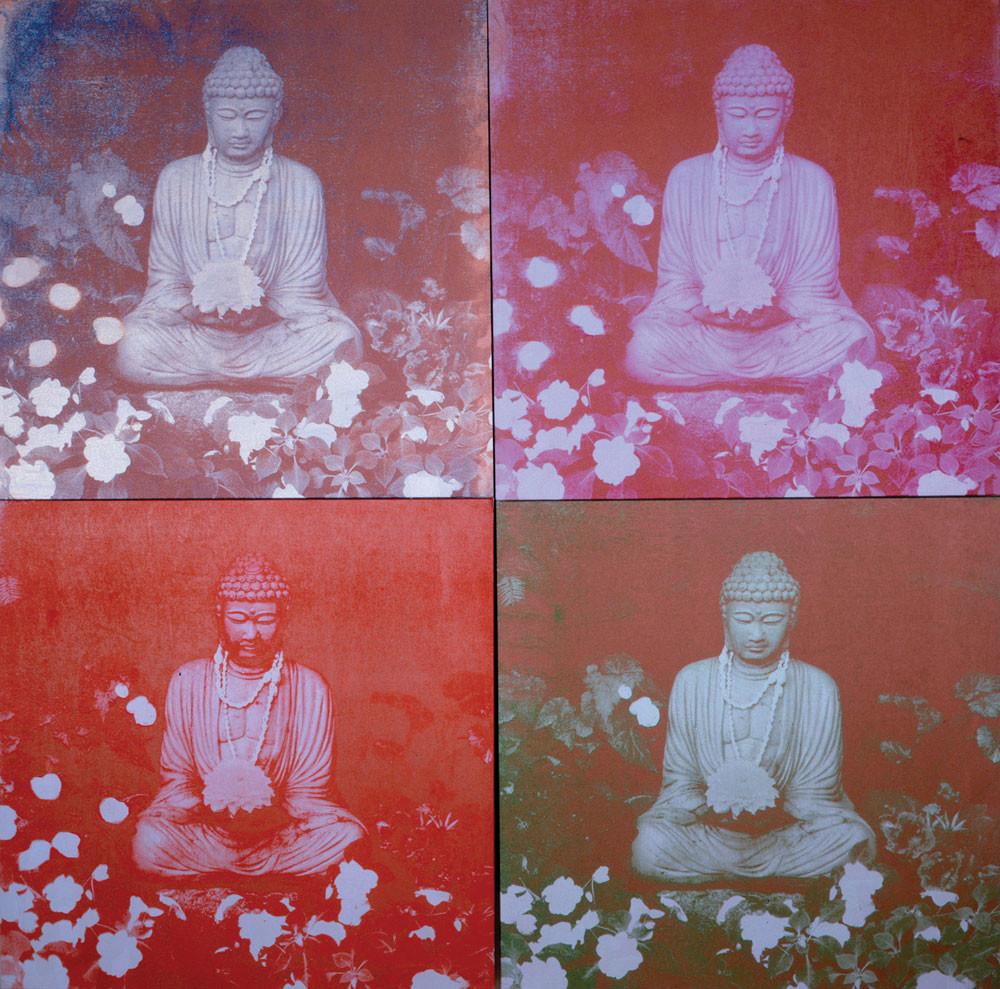
We have to be careful not to think that meditation is about getting rid of thoughts. On the contrary, I would say that meditation helps us to creatively engage with our thoughts and not fixate on them. When people say they cannot concentrate, I say, “No, no, no! You are concentrating—too much on any one thought!”
It is interesting in meditation to notice all the different places where our thoughts lead us—what distracts us and what occupies our minds. It is important to notice these things in meditation because these will be the same things that occupy our minds in daily life. As we become more familiar with our thoughts in meditation, we will see how repetitive our thoughts are. We often think very similar things over and over again and it is actually rare to have what I would call a creative, original thought.
What I recommend is to follow the breath, or let sounds be the object of your concentration [see here], or try body-awareness meditation. Then ask yourself, Where did I go? When I was distracted, what did I do? And then you can see that you have many different types of thoughts, which generally fall into three categories: light, intense, and habitual.
Often we try to work with our thoughts only when they reach a high level of intensity. By then I would say it is too late, because they are already so strong and so powerful that it is very hard to work with them. The only thing we can do when we are really caught in heavy, obsessive thoughts is to realize the cause—maybe something happened and you are upset. Just be careful not to feed the intensity. I think that meditation practices can help here. For example, when coming back to the breath time after time, if you’re really obsessive then you’ll eventually notice, “Oh, I’m obsessive.” Then try to come back to the breath just a little bit, just for a few seconds. Then keep coming back. This may not remove the intensity of the thoughts completely, but at least their intensity will diminish, and generally the thoughts won’t last as long.
As we meditate, we become more aware of the habitual nature of our thoughts. I think of this level as consisting of the mental grooves that our thoughts habitually follow. Meditation helps us break free of these habitual patterns and unleash the original and creative power of thought.
Daydreaming is an important mental habit to be aware of. Daydreaming can be very frustrating. If you have a tendency to daydream in daily life, then you will often compare what you experience in your life to what happened in your daydream, where everything went according to plan. Daydreams are seductive. It’s like a film where we are the actor, the scriptwriter, the director, the producer. We even sell the popcorn. It can be wonderful, we can tweak whatever we like and do whatever we want—but then we have to come back to reality, where things don’t always go our way. I think we need to know when we are daydreaming— not in order to judge but to come back to the moment and say, “Oh, I’m lost in a daydream.”
I remember when I was a nun and was meditating ten hours a day. Instead of meditating, though, I would daydream about it! I would daydream about going to a hermitage, practicing very hard, becoming awakened, and saving everybody. When I realized this was not meditation, I went back to truly cultivating my practice. I was then able to restore the mental energy I spent daydreaming to its original purpose: creative imagination. When I write a book, I don’t daydream about writing a book. I just think: What about this? What about that? When I go to write, I become very imaginative and creative. I bring it all back to creative imagination.
Light mental patterning is natural, and it is the easiest level to work with. A live brain is active, constantly firing and thinking of something. We will have aimless trains of thoughts, weird association of ideas, shopping lists or light planning. These are interesting in that due to their lightness, we can play with them more easily and also laugh at them as we recognize certain motifs and see how unnecessary they are. I can see a “preparing luggage” loop. Since I recognized this loop, I only indulge in it near to the time of departure and not for very long. Having become aware of it, I find it pointless, as I know that I am quite able to do my luggage quickly and efficiently.
We need to recognize light mental patterning, because under certain circumstances we move quickly from light to habitual to intense and we find ourselves in the grip of an obsession, which just started as a faint wisp of thought in the mind. We do not need to be afraid of our mind. We can go on a journey of discovery and experiment. Then we are able to play with our mental processes and develop our mental ability in wisdom and compassion.
From: Tricycle
